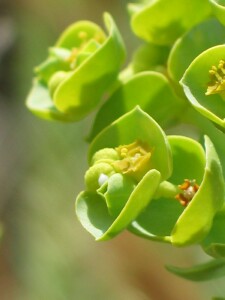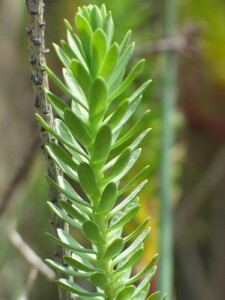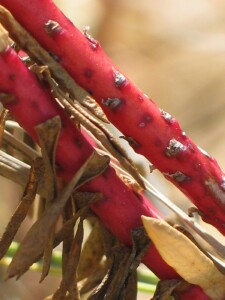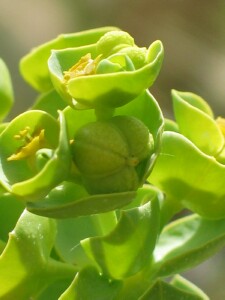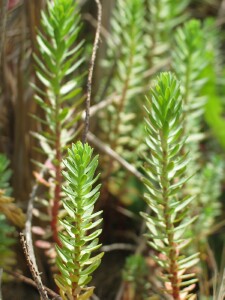Sea Spurge
Back | Salinity Indicator Plants Home | Common name home | Scientific name home | Photo Gallery | Glossary
| Sea Spurge photos | Family: Spurge (Euphorbiaceae) |
| Scientific Name: | Euphorbia paralias | 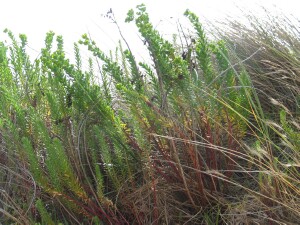 Stand of Sea Spurge Photo: A J Brown |
Status: | Native to Europe, including the Mediterranean and Siberia. Naturalised Western Australia, South Australia, Tasmania, New South Wales and Victoria. | |
Plant Description: | A perennial herb growing to 70 cm tall with smooth and fleshy stems, becoming bright red with age. The base of the branching stems can become somewhat woody with age. The thick, obovate, elliptic-oblong to ovate, bluish-green leaves are crowded on the stems and are 5-20 mm long and 2-15 mm wide. Leaves on flowering branches are more or less circular to rhomboid in shape. Flowers are in specialised cup-shaped flower-heads known as cyathia; consisting of a female flower surrounded by male flowers and 4 crescent-shaped, shortly horned glands within bracts, known as an involucre. The yellow-green involucre are about 1.5 mm long and. Fruit is a capsule, 3-5 mm long and 4.5-6 mm wide, containing ovoid to globose, smooth, pale grey seeds, 2.5-3.5 mm long. | |
Habitat: | Mainly a species of foredunes, Sea Spurge has also been known to move into steep secondary dunes, rocky foreshores and even the mouths of estuaries. | |
Comments: | Sea Spurge is an invasive weed that first appeared in Western Australia about 70 years ago; probably being introduced in ships’ ballast water. In the last 20 years it has progressively worked it’s way across south-eastern Australia and up the NSW coastline. Each plant can produce up to 5000 seeds that are salt-tolerant and can survive on ocean currents that carry them from beach to beach. It displaces many native species, rapidly becoming dense monospecific colonies and consequently adversely affecting native fauna habitat (e.g. hooded plovers that nest in open sand spits). Care should be taken if removing Sea Spurge by hand as its milky sap may irritate the skin and eyes. Gloves, glasses and other protective clothing should be worn and direct contact with skin should be avoided. | |
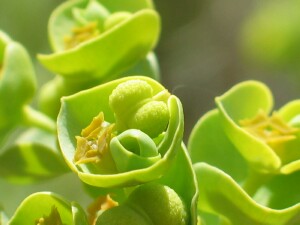 Sea Spurge Flower-head showing yellow anthers surrounding the stigma, a developing fruit and a newly developing involucre Photo: A J Brown | 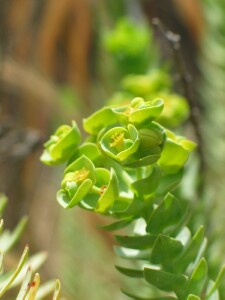 Flower-heads of Sea Spurge Photo: A J Brown |
|
|
|
|
|

